There is no unambiguous definition of the tall building (skyscraper) in the world. A tall building is one that dominates in the landscape through its scale, so it does not have to be significantly high, but it is prominent above the surrounding buildings. As a consequence, the term “tall building” is relative to the environment under consideration and tall buildings cannot be defined in terms of any specific number of floors or storey height.(Czynska K: 2018)
For each city, what is considered a tall building or not differs as well as the way that tall buildings are integrated into urban environments. The project focuses on Europe and how tall buildings are integrated in European capitals where their identity is mostly linked to the historical urban structure of their centers. The historical heritage of European cities is a cultural and social structure that brings great economic benefits, therefore its preservation plays a decisive role for their development (Phelps Et al., 2002). In addition, it reflects the main narratives of the cities, including their historical elements such as preservable buildings, monuments, archaeological sites, that symbolize their character, scale and image. The introduction of tall buildings, either individually or in groups, changes the pre-existing urban conditions, especially in cases with a strong historical heritage element, therefore careful handling is required. On account of this, two different methods of tall buildings’ integration in European cities have been developed. In regards to the first method, the placement of tall buildings takes place in the historic center (City of London) while, in the second one, tall buildings are located outside of it, either around as a new ring (Case of Vienna) or on the outskirts (La Défense, Paris).
This study uses London as a reference case.
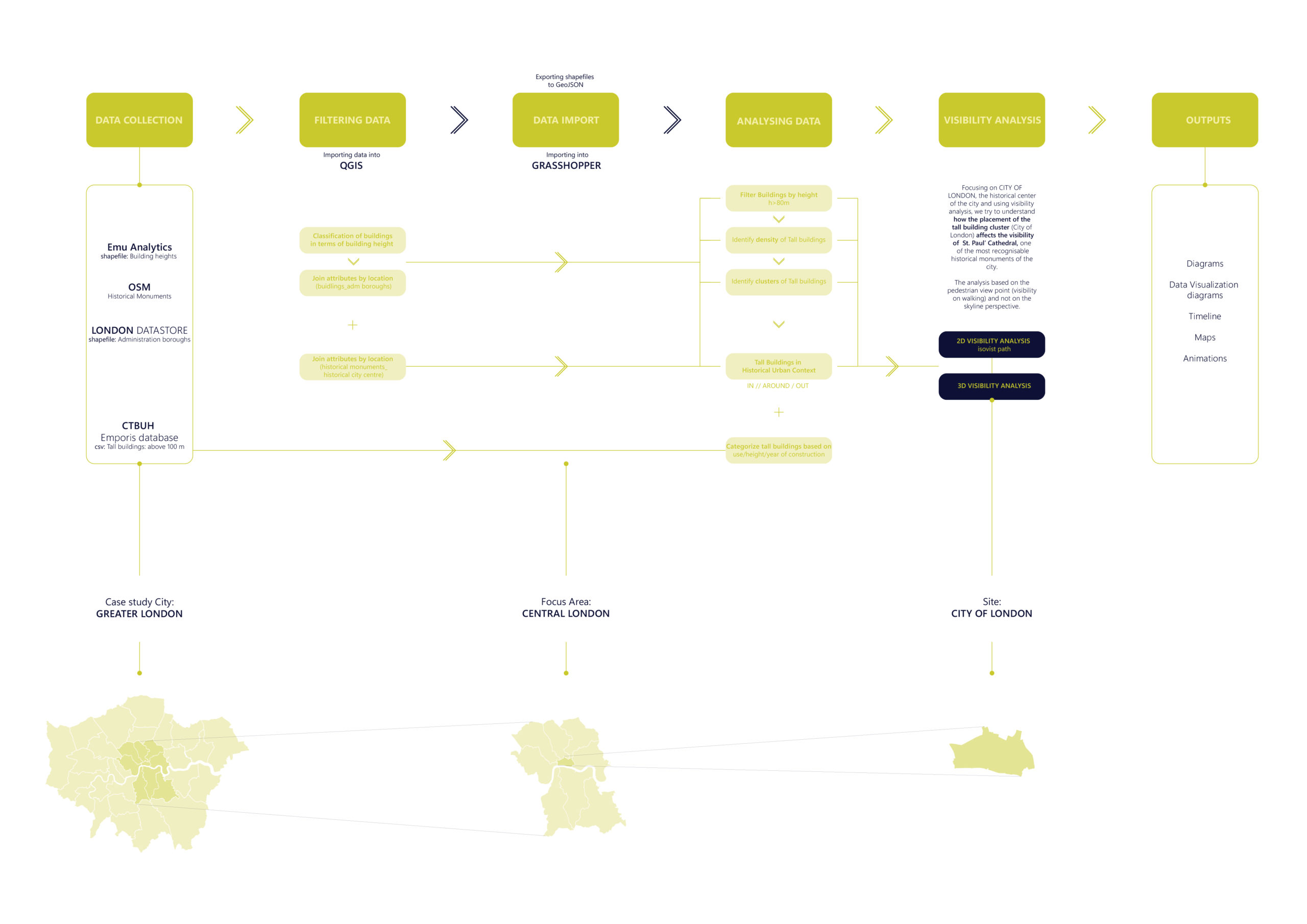
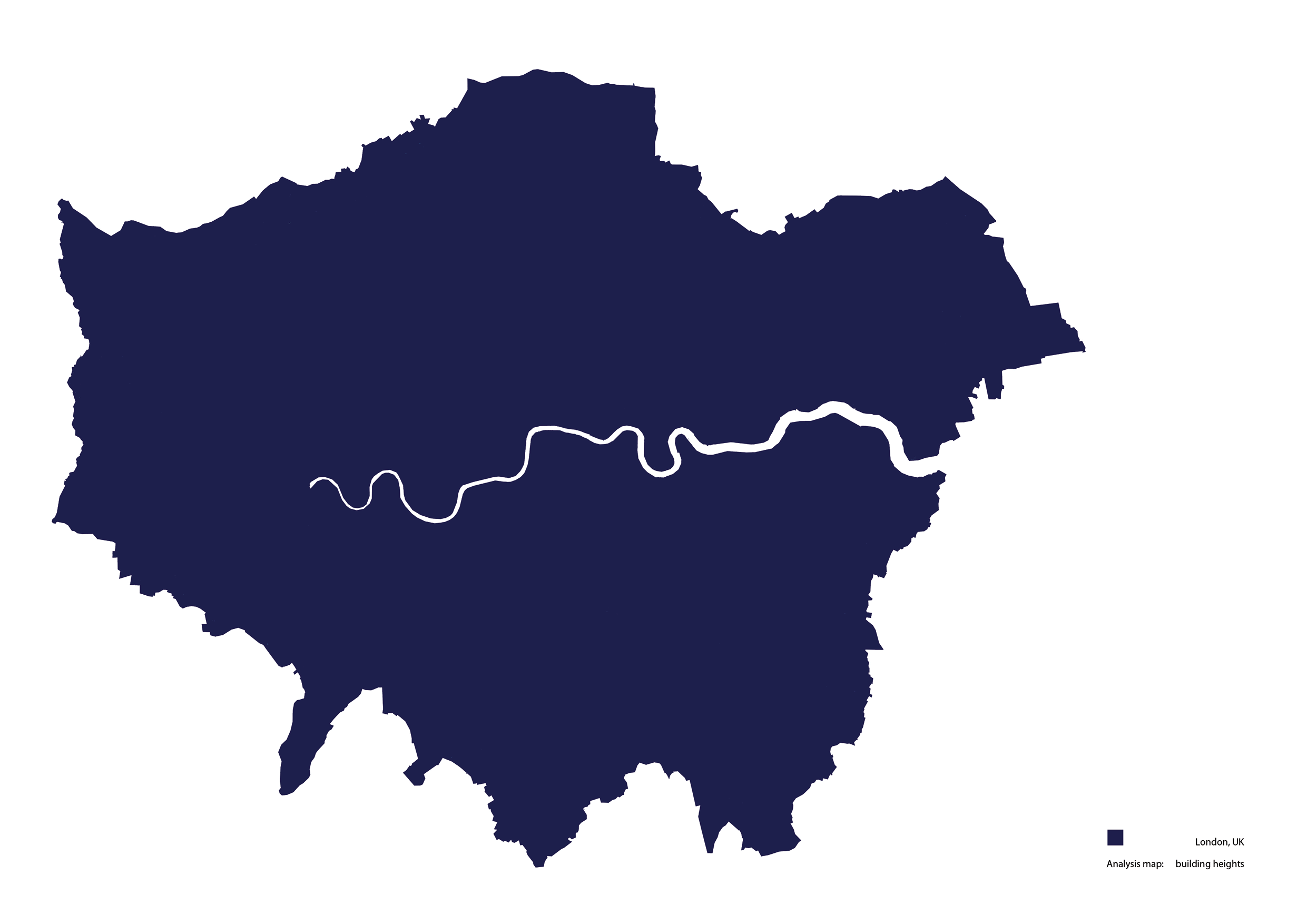
In the first part, based on open datasets and using computational design tools, the tallest buildings (above 100m height) are identified and based on their density, clusters between them are formed. They are classified by their height, use and year of construction afterwards in order to have a better understanding of the tall building architecture policy in London. In the final part based on their placement in regards to the historic center of the city, it is clear that London contains all the different methods of tall buildings’ integration into European city centers.
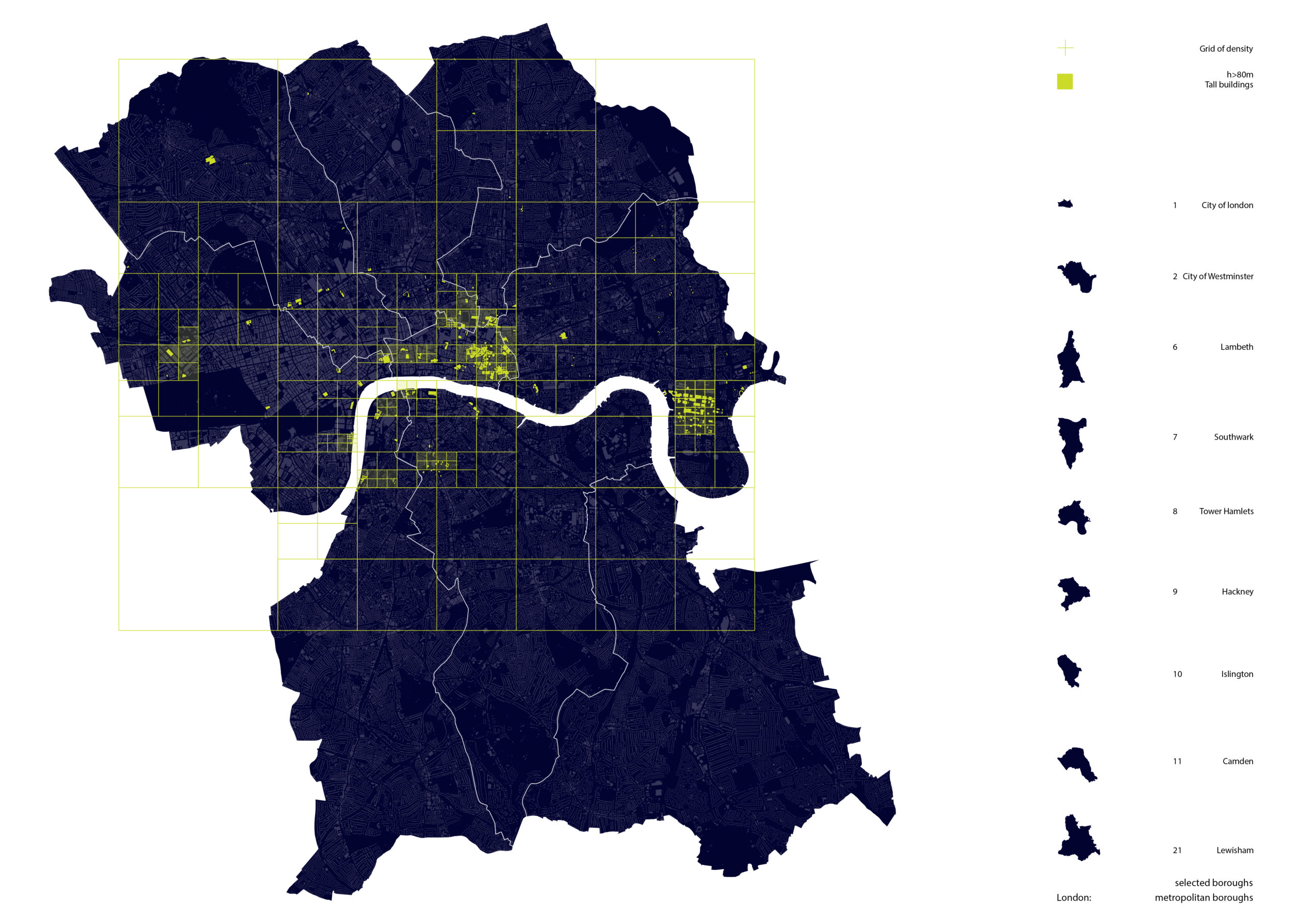

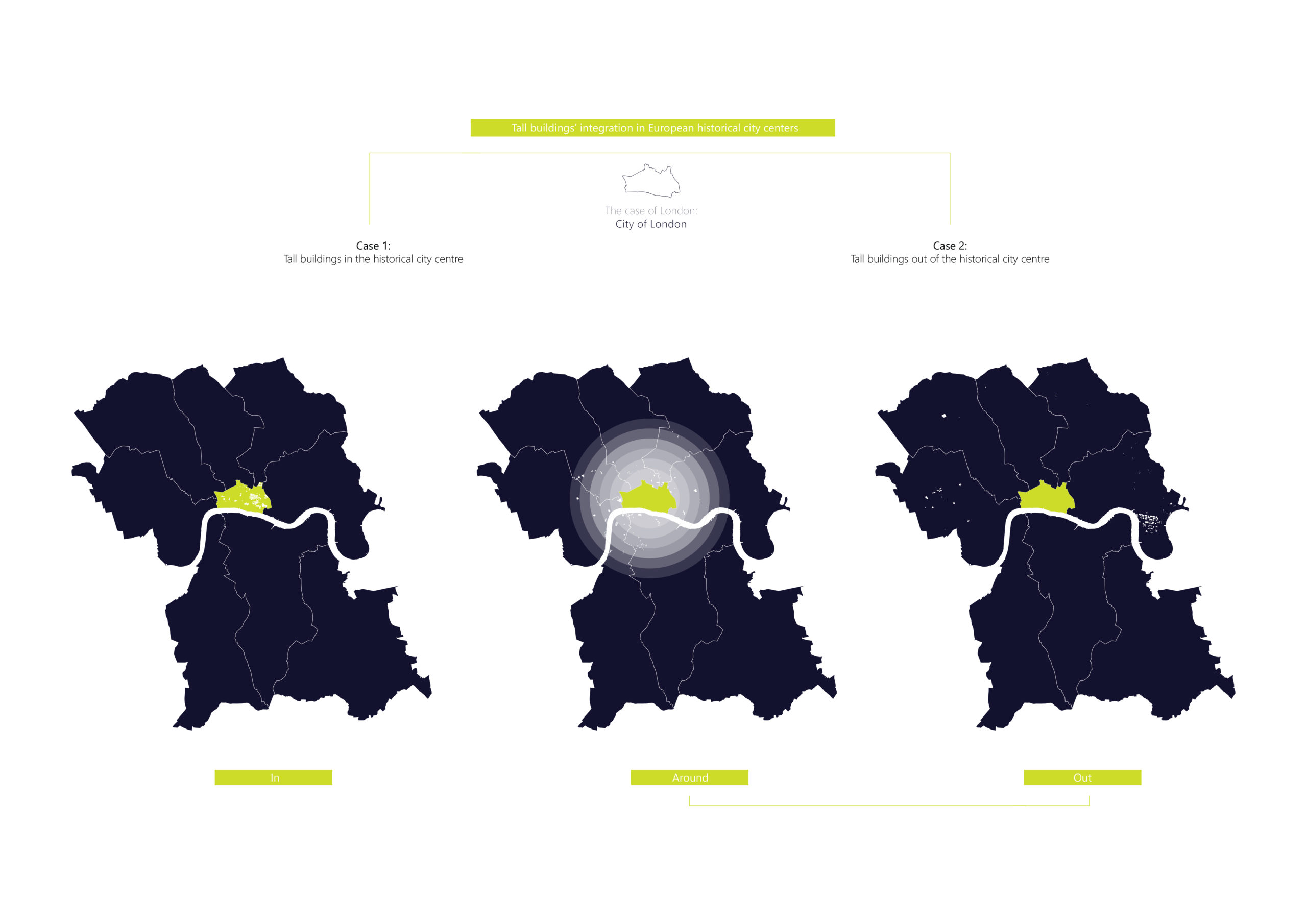


The second part of the study focuses on the 1st method : Tall Buildings in historic centers

More precisely, City of London, the heavily damaged by the World War II city center, was remained with few noteworthy historical structures. Consequently, for its urban regeneration, the solution was its careful reconstruction, integrating its business center (City of London) into the historical center, the new with the old, through the construction of skyscrapers alongside the historical structures. The form, shape and placement of the skyscrapers were determined in such a way as to preserve the visual axes of the historical monuments such as the views of St. Paul’s Cathedral, the Tower of London and the Palace of Westminster and to contribute in forming a recognizable skyline as well.
However, can citizens-pedestrians recognize the historical monuments in that coexistence with tall buildings urban habitat?
A visibility analysis takes place in order to understand how and to what extent the tall building cluster in the city of London affects the legibility of the St. Paul’s Cathedral from the pedestrian view point.
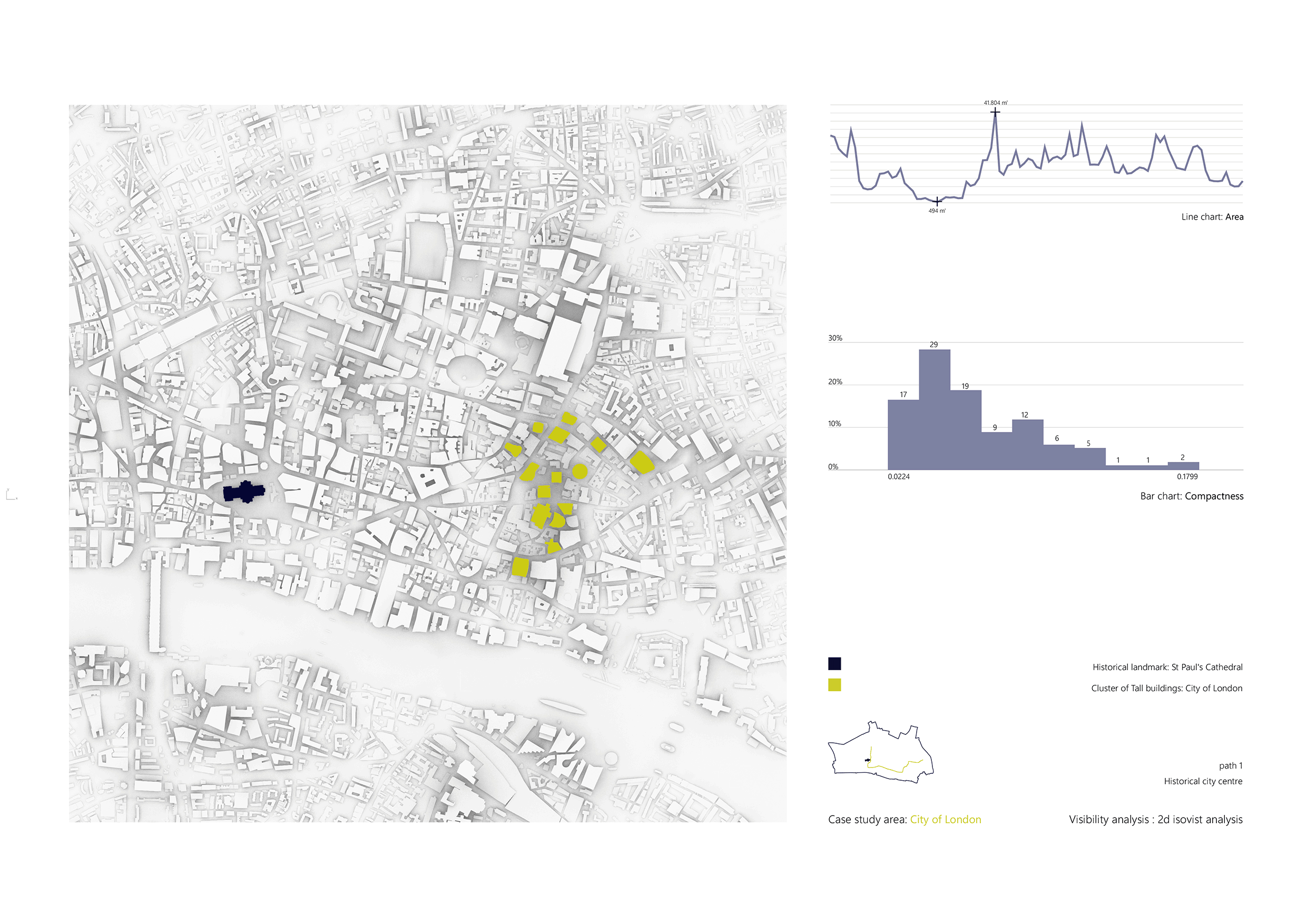

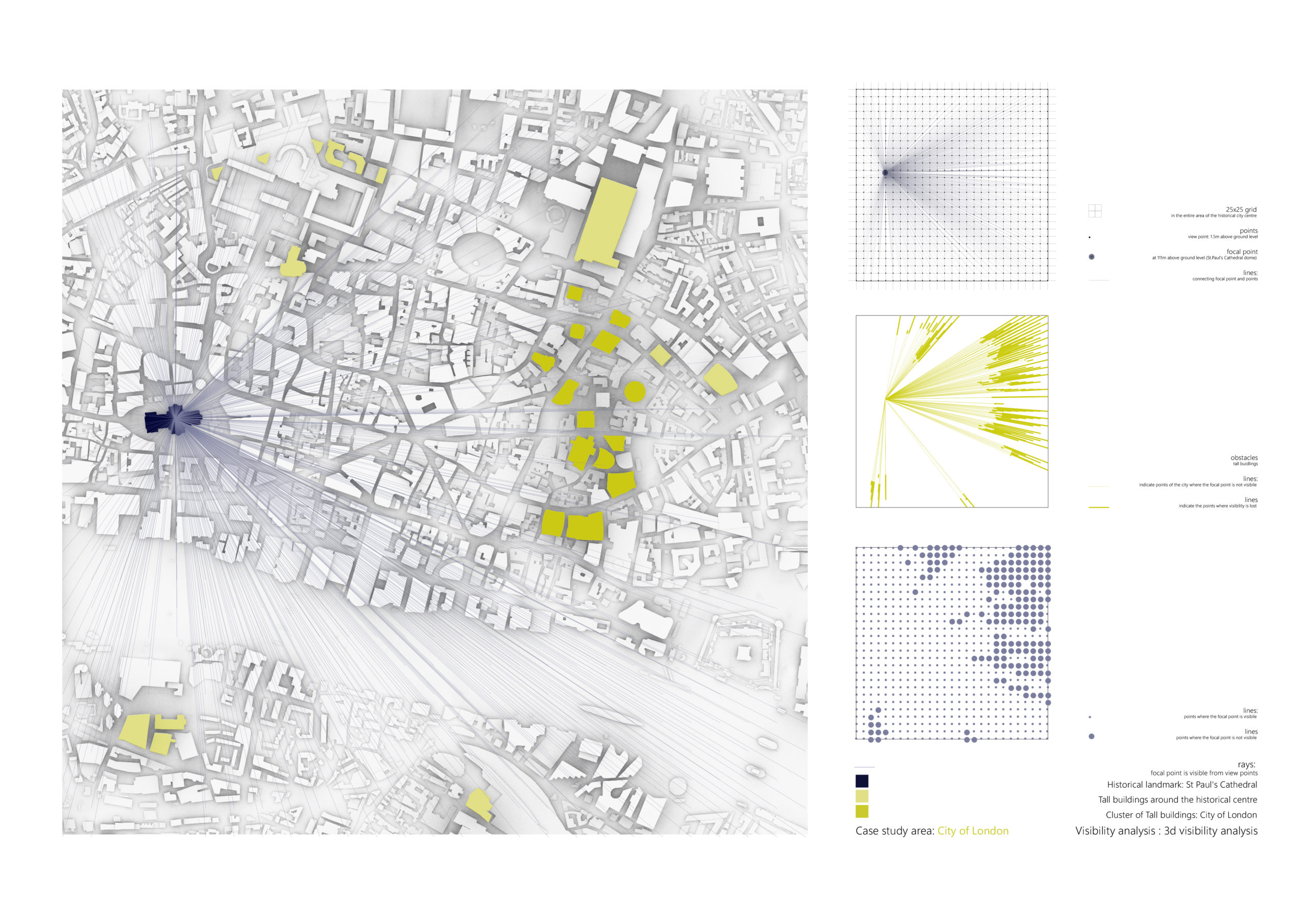

Citation:
-Czynska K: (2018): A brief history of tall buildings in the context of cityscape transformation in Europe. Space and Form (36):281-296.
-A.Phelps, G.J. Ashworth, G. J., B.O.H Johansson, (2002): The Construction of Built Heritage: A European Perspective on Policies, Practices and Outcomes, Routledge, London, 247-258.

